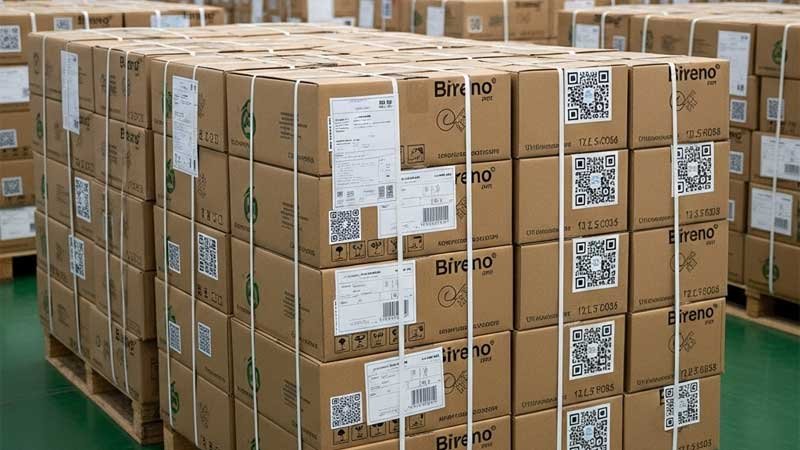In silicone OEM projects, choosing the right supplier is key to product quality and smooth execution. With so many silicone manufacturers out there, how can you quickly spot a reliable partner? Having a list of well-prepared questions helps you assess their true capabilities and avoid hidden risks.
This guide covers the core areas you should ask about—including materials, processes, quality control, production capacity, and after-sales service.
Is the Silicone Material Safe and Certified?
When choosing a silicone supplier, always start with material safety and quality. These are the foundation of product reliability and market approval. In early discussions, ask how the supplier chooses and manages raw materials. This helps make sure the final product is safe, stable, and ready for your customers.
What Type of Silicone Do They Use?
First, ask what kind of silicone the supplier uses. Is it platinum-cured or peroxide-cured? Platinum-cured silicone is cleaner, has no smell, and is better for food-grade or medical use. Peroxide-cured silicone is cheaper, but it may need extra curing to remove smell and by-products. Also ask if the material is LSR or HTV. This choice affects how the product is molded, how accurate it is, and how it performs.
Where Do Their Raw Materials Come From?
Next, ask who supplies their silicone. Do they buy from trusted brands like Dow Corning, Shin-Etsu, Wacker, or Bluestar? Request their MSDS (Material Safety Data Sheet) and COA (Certificate of Analysis). These documents list what’s in the material and help you check if it’s safe and stable.
Do They Have the Right Certifications?
Certifications are key. Ask if they’ve passed FDA, LFGB, REACH, or RoHS tests. These show the product meets safety rules in major markets. If you’re selling in the U.S., make sure the silicone also meets California Proposition 65. This covers chemical safety.
Is the Material Free from Harmful Substances?
Lastly, confirm that the silicone is truly safe. Ask how they ensure it doesn’t contain heavy metals, phthalates, or PVC fillers. Good silicone should be clean, odor-free, and halogen-free. This protects both user health and environmental safety.

How Are the Supplier’s Molding and Production Capabilities?
A supplier’s tooling and production skills affect your product’s quality and speed. Knowing how they design molds and make products helps you make sure your design is produced accurately and at scale.
Do They Design and Build Molds In-House?
Start by asking if the supplier has an in-house mold department. This brings several key advantages:
- Faster turnaround for design changes or tool maintenance
- More flexible adjustments when your product needs updates
- Better quality control over tooling precision and upkeep
You should also ask:
- What kind of mold steel do they use?
- How long does a mold typically last?
- Do they allow ownership transfer of the mold? This protects your IP and gives you control if you need to switch suppliers later.
What Molding Methods Do They Offer?
Next, find out what molding techniques they support. Each method affects product performance, complexity, and production cost.
| Molding Type | Features | Common Use Cases |
| Compression Molding | Traditional method, lower tooling cost. Best for simple shapes. | Solid silicone items like phone cases, kitchen tools, gaskets |
| Injection Molding (HTV) | Faster than compression. Suitable for small, solid silicone parts. | Silicone buttons, household items |
| LSR Injection Molding | High automation, clean and efficient. Offers tight tolerances and usually flash-free parts. | Medical tubes, baby nipples, waterproof seals |
| Two-shot / Multi-shot Molding | Combines colors or hardness in one mold shot. | Color-marked keys, dual-material grips, multi-zone components |
What Surface and Printing Techniques Are Available?
Surface treatment and printing matter a lot for the look and function of your product. Ask what finishing processes the supplier supports.
Printing Methods:
- Screen printing – Best for large logos or text with rich color.
- Pad printing – Great for uneven surfaces and fine details.
- Laser engraving – Durable, precise markings that can glow through.
- Heat transfer printing – High-quality multi-color designs.
Surface Finishing:
Ask about surface finishing options. Spray coating can improve the feel or apply even color. Anti-dust and anti-static coatings help keep the product clean.
To avoid printing issues, check how the supplier handles ink adhesion. Look for proper surface treatments like plasma or corona, high-quality silicone inks, and accurate curing. These steps help prevent peeling and ensure long-lasting prints.
Can they handle complex structures?
If your product involves more than basic molding, ask about advanced capabilities. Overmolding bonds silicone with plastic or metal. Insert molding wraps silicone around components like nuts or PCBs. Internal bonding joins silicone with other parts cleanly. Also ask if they can do full assembly. These abilities support more complex designs and give your product a stronger edge in the market.

How Do Quality Systems and Sample Validation Work?
In silicone OEM projects, a supplier’s quality management system plays a big role in product stability and customer satisfaction. To help you evaluate clearly, here’s a breakdown of four key areas to review:
Do They Follow a Complete Quality Control Process?
A reliable silicone supplier should have a full inspection system in place:
- IQC (Incoming Quality Control) – Checks if raw materials meet the standards
- IPQC (In-Process Quality Control) – Monitors product quality during production
- FQC (Final Quality Control) – Ensures finished goods meet product specs
- OQC (Outgoing Quality Control) – Prevents defective goods from shipping to customers
Questions to ask:
- Do they keep detailed QC records?
- How do they identify and isolate defective parts?
- Can they create custom inspection standards based on your needs?
Do They Support Sampling and Custom Testing?
Samples are not just early prototypes—they set the benchmark for future production.
Ask about these areas:
| Area | What to Ask |
| Sample Lead Time | How long does it take to make a sample? Can they rush it if needed? |
| Testing Options | Do they support odor, elasticity, or biocompatibility tests? |
| QC Standard Setup | Can they turn sample results into batch QC standards? |
How Do They Ensure Batch Consistency?
Consistency from sample to mass production is key to quality control.
- Do they have a color matching database? How do they ensure color stays the same?
- For multi-color products, do they use a colorimeter? Do they follow a color deviation standard?
- Do they follow a batch control SOP, including traceable lot numbers and production records?
Can They Handle Durability and Food Contact Testing?
Beyond appearance and function, a product must stay safe and stable over time:
- Aging Tests – Check for cracking, discoloration, or property loss under heat, humidity, or UV
- Food Simulation Tests – Make sure nothing harmful leaches out when in contact with acid, oil, or alcohol-based foods
Questions to ask:
- Can they provide third-party test reports for aging or migration tests?
- Do they offer custom testing, like steam aging or thermal cycling?

How Do Suppliers Manage Production Capacity and Lead Times?
In OEM partnerships, a supplier’s ability to manage capacity and lead times plays a big role in your supply stability, inventory costs, and overall project speed.
What’s Their Factory Size and Output?
Start by checking the factory’s scale—how many workers, how many production lines, and what their monthly output is. This helps you gauge whether they can handle your order volume. Also ask how capacity is divided across different product types.
What’s the Minimum Order Quantity (MOQ)?
Next, ask about the MOQ for each product or process. This is important for managing your stock levels and cash flow. Some suppliers may have lower MOQs for simple items and higher ones for complex products.
What’s the Lead Time for Samples and Mass Production?
Then, clarify how long it takes to get samples and how soon they can deliver full production orders. Knowing these timelines lets you plan your project and launch schedule more accurately.
How Do They Handle Peak Seasons or Material Shortages?
Lastly—and most importantly—ask how they deal with delays or supply chain issues. Do they have backup suppliers? Flexible scheduling? Emergency plans? Also find out how they manage raw material stock and communicate about delays. These answers show how well they handle risk and stay reliable.

How Are Packaging, Shipping, and After-Sales Support Handled?
In silicone OEM projects, solid packaging, smooth logistics, and strong after-sales support are key to making sure your products reach the U.S. safely and protect your brand reputation.
What Packaging Options Are Offered? Can They Support Custom Branding?
Start by asking what types of packaging they provide—bulk, bagged, blister packs, color boxes, and so on. More importantly, check if they can customize the packaging to match your brand. This includes using eco-friendly materials, printing your logo, and creating protective packaging designs to keep the product safe during shipping.
Is the Packaging Eco-Friendly? Do They Support Pallets, Labeling, and Barcode Tracking?
Next, ask about their handling processes. Do they use sustainable packaging? Can they palletize shipments, apply custom labels (such as barcodes or SKU codes), and support barcode tracking? These features improve traceability and streamline your logistics.
What Shipping Channels and Trade Terms Do They Use?
Understanding their logistics experience is essential for smooth international trade. Ask which freight partners they use, whether they have experience exporting directly to the U.S., and what Incoterms they offer (like FOB, EXW, or DDP). These terms define who pays for shipping, who handles risk, and who manages customs.
How Do They Handle Quality Issues After Delivery?
Finally, make sure they have a clear after-sales process. A reliable supplier should be ready to respond to product issues quickly. Ask how they collect feedback, analyze problems, offer solutions (such as replacements or refunds), and how long they take to reply. Also check if they offer any product warranty terms.

Conclusion
A successful silicone project depends heavily on a dependable supplier. Asking the right questions early on gives you a full picture of their strengths, reduces uncertainty during development, and helps keep both quality and delivery on track.
Our team has over 10 years of experience in silicone manufacturing. With advanced technology and a strong quality system, we’re ready to help you customize silicone products that meet your needs. Feel free to contact us to get started.